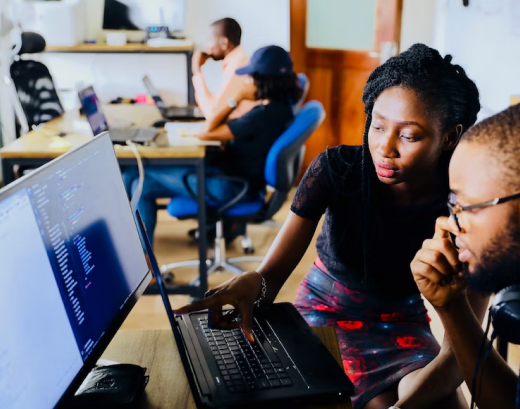Africa’s accessibility community
Digital accessibility (a11y) is a wide-ranging topic. It compels us to rethink how we design and develop digital products and services to ensure it includes people with disabilities.
What Africa a11y does best
Design: The accessibility of website and mobile apps on mobile phones is critical. A web product should not change because someone uses a mobile phone regardless of using Android or iOS. There are basic best practices for helping users to make the most of small screens in the implementation of responsiveness such as minimizing the amount of information that appears on each page compared to desktop and laptop versions.
A dedicated mobile version contains content tailored for mobile use. For example, the content may contain fewer content modules and fewer images. A responsive design contains content that stays the same. It uses CSS stylesheets to render the content to fit the screen for the width. Designers can create different iterations of the same design to support the different viewports.
Designers can also provide a reasonable default size for content and touch controls to minimize the need to zoom in and out for users with low vision. They can also adapt the length of link text to the viewport width and position form fields below rather than beside their labels.
Development: Mobile phones are essential assistive technologies for people with disabilities. Building accessible apps ensure everyone gets access to information and experience the world like everyone else. Therefore, accessible mobile applications attract a wider range of users. Developers can apply WCAG 2.1 guidelines to mobile web content, mobile web apps, native apps, and hybrid apps using web components inside native apps.
They can also learn how web browsers that follow User Agent Accessibility Guidelines (UAAG) benefit people with disabilities using the web on mobile devices. This influences their approach to coding for mobile devices and other small screens. Developers use authoring tools — software and services used to produce web content — to create web pages and applications for mobile. Guidelines for these tools can be found under the Authoring Tool Accessibility Guidelines (ATAG). When it comes to making web content more accessible, especially dynamic content and advanced user interface controls, the Accessible Rich Internet Applications (ARIA) suite comes in handy.

Our Story
With years of experience in digital accessibility, Technoprise Global is a woman-owned business with 40% of its staff having disabilities. We aim to improve accessibility of digital products and services in Africa through this platform.
Africa has a population of 1.4 billion people. About 15% live with disabilities [UN]. As we develop digital products and services, it’s important we understand the needs of all users as well as the unintended consequences of the products. Designing with people with disabilities in mind will help ensure that no one is left behind.
Accessibility is a journey and UX designers and developers are part of this critical ecosystem. Africa has about 700,000 developers [GSMA report]. We use this platform to educate, share, and collaborate with designers and developers to help improve accessibility of digital products and services in the African market.
Quick Facts
-
80 Million
AfricansMore than 80 million Africans have disabilities [Source: UN]
-
Mobile
Technology75% of online traffic across Africa comes from mobile phones. [Source: Beyond Borders report *EBANX]
-
96% of
Home pagesMore than 96% of the top 1,000,000 home pages had accessibility failures [Source: WebAIM Million 2023]
-
Low Contrast
Ratio83.6% of the top 1,000,000 home pages did not meet minimum requirements for low contrast text. [Source: WebAIM Million 2023]
Our Accessibility Platform
A community of UX and UI designers, developers, people with disabilities, and accessibility supporters.
Participate